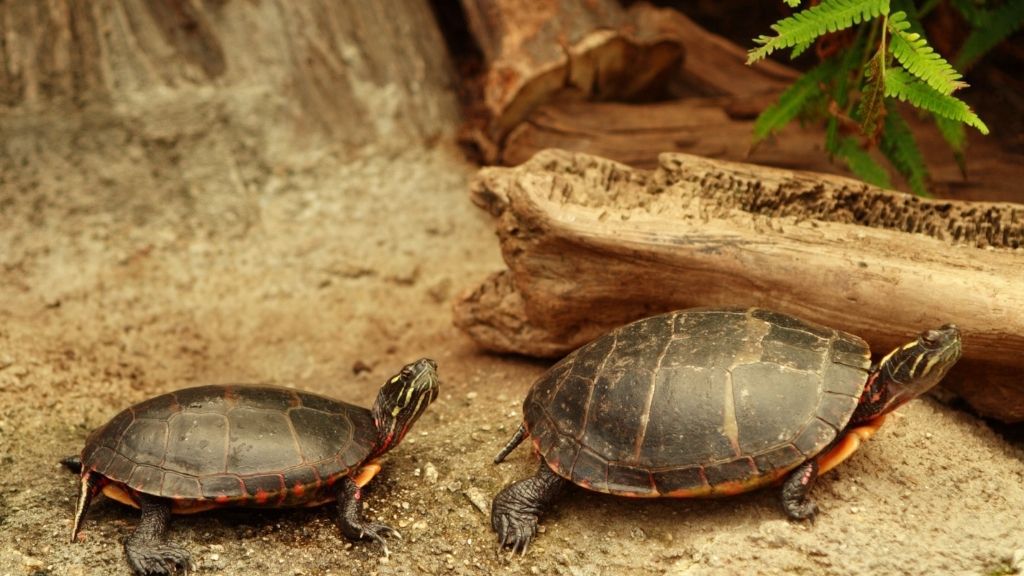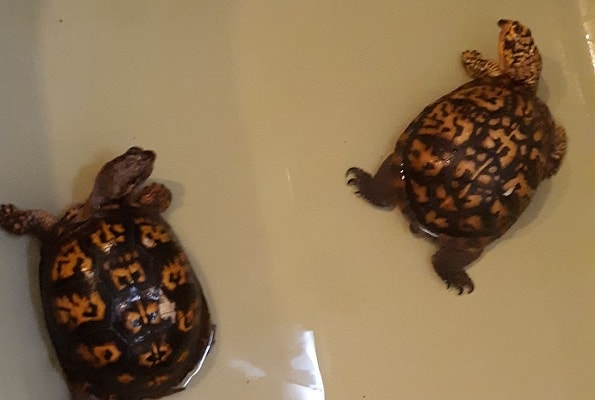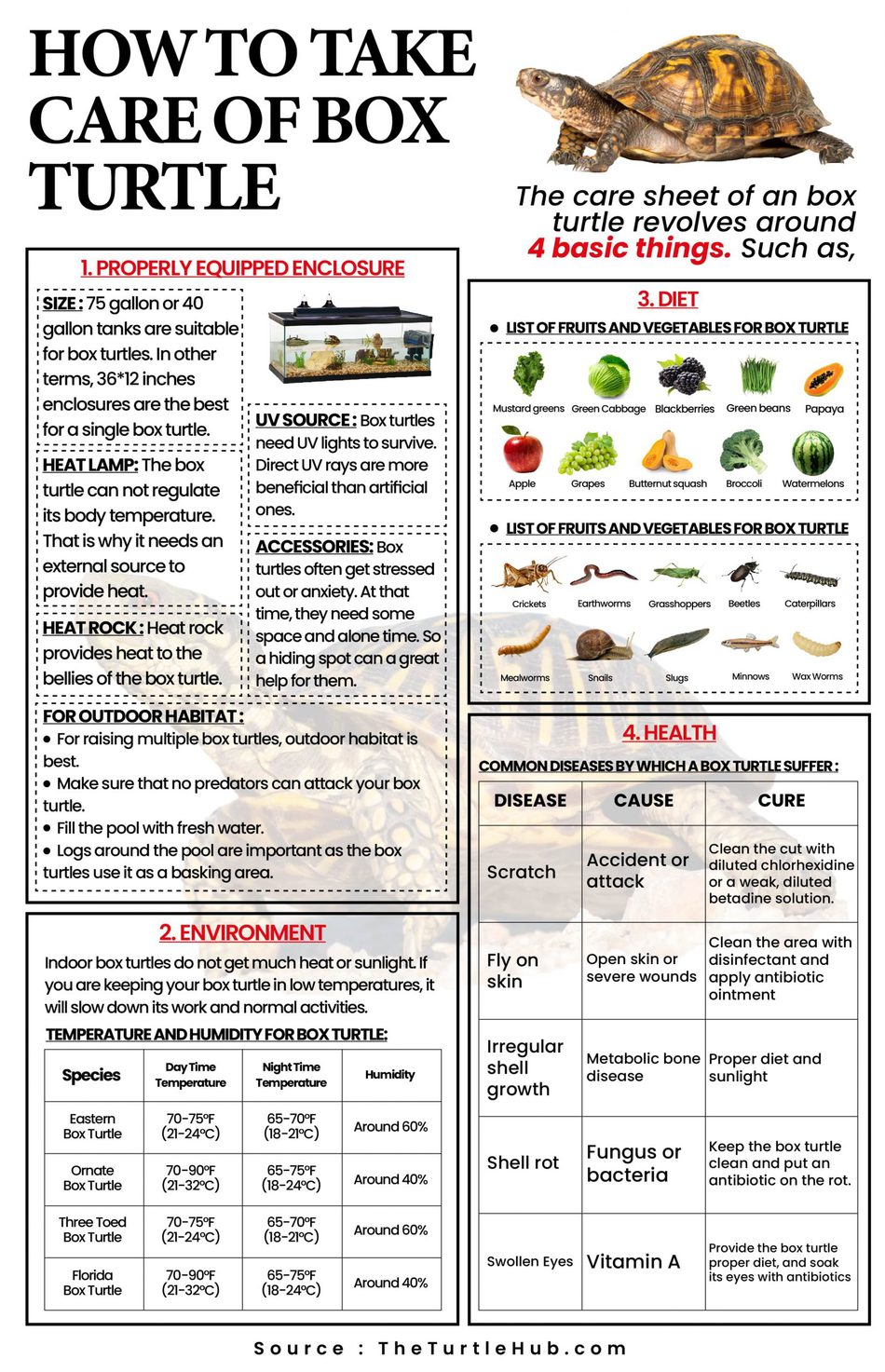Have you ever wondered if it’s possible to keep multiple turtles in the same habitat? Maybe you have a few turtles and you’re thinking it would be nice to have them all together, or maybe you’re considering getting another turtle but you’re not sure if they can coexist peacefully. Well, the good news is that it is possible to keep multiple turtles in the same habitat, but it does require some careful planning and consideration. In this article, we’ll discuss some tips and guidelines to help you successfully keep multiple turtles together.
First and foremost, it’s important to ensure that you have a spacious enough habitat for all of your turtles. Turtles need plenty of space to move around and explore, so make sure the tank or enclosure is large enough to accommodate multiple turtles comfortably. Additionally, it’s crucial to provide adequate hiding spots and basking areas for each turtle. This will help minimize territorial disputes and ensure that each turtle has its own space to retreat to when needed.
Another important aspect to consider is the compatibility of different turtle species. Not all turtle species can coexist peacefully, so it’s essential to do your research and choose turtle species that are known to get along well together. Some species might be more aggressive or dominant than others, so be sure to select compatible species to avoid any conflicts. Additionally, it’s a good idea to provide multiple feeding and drinking stations to prevent competition and ensure that each turtle has access to its own resources.
While keeping multiple turtles in the same habitat can be rewarding, it’s important to monitor their behavior and be prepared to separate them if necessary. Keep an eye out for any signs of aggression or stress, such as excessive chasing, biting, or signs of illness. If any turtle seems to be consistently picking on another or if you notice any signs of distress, it may be necessary to provide separate enclosures for them to alleviate any tension.
In conclusion, keeping multiple turtles in the same habitat is possible with careful planning and consideration. Providing enough space, hiding spots, and basking areas, as well as choosing compatible turtle species, are crucial for maintaining a peaceful coexistence. Just remember to monitor their behavior and be prepared to make adjustments as needed to ensure the well-being and happiness of all your turtles.

Choosing the Right Habitat
When it comes to keeping multiple turtles in the same habitat, it is essential to choose the right environment for their well-being. Several factors need to be considered to ensure a suitable habitat for your turtles.
Size of the Habitat
The first thing to consider when setting up a habitat for multiple turtles is the size of the enclosure. Turtles need ample space to roam and swim, so make sure the enclosure is large enough to accommodate all the turtles comfortably. As a general rule, you should provide at least 10 gallons of water per inch of turtle shell length. Additionally, the land area should be spacious enough for the turtles to bask and move around freely.
Water Quality
Maintaining good water quality is crucial for the health of your turtles. Turtles produce waste, so it’s important to have a water filtration system in place to remove debris and chemicals. Regular water changes are also necessary to prevent the buildup of harmful substances. Invest in a water testing kit to monitor the levels of ammonia, nitrate, and nitrite in the water. If any of these levels are too high, it can be detrimental to the turtles’ health.
Temperature and Lighting
Turtles are ectothermic, which means they rely on external sources to regulate their body temperature. It is essential to provide the turtles with a basking area where they can raise their body temperature. Use a heat lamp or a UVB light to provide the necessary heat and UVB rays for their metabolic processes. The temperature should be maintained between 75-85°F, and the basking spot should be around 10-15°F warmer. Proper lighting is crucial for the turtles’ overall health and helps prevent metabolic bone disease.
Creating Separate Basking Spots
While turtles are social creatures, it is important to provide them with separate basking spots within the habitat. This allows each turtle to have their own space and prevents potential territorial disputes.
Importance of Basking Spots
Basking spots are essential for turtles as they provide a place for them to dry off, absorb UVB rays, and regulate their body temperature. Turtles rely on basking to boost their immune system and aid in digestion. Without proper access to basking spots, turtles may become stressed and their health can be compromised.
Size and Placement
When creating basking spots within the habitat, ensure that each spot is large enough for a single turtle to comfortably rest. The spot should be easily accessible from the water and provide enough space for the turtle to climb out and bask without disturbance.
Design and Accessibility
The design of the basking spots should mimic natural environments. Use rocks, logs, or floating platforms to create a variety of options for the turtles to choose from. Ensure that the basking areas are placed at different heights and angles to suit the turtles’ preferences. It is also essential to regularly check and clean the basking spots to prevent the accumulation of waste and maintain a hygienic environment.

Providing Sufficient Food and Water
Proper nutrition is crucial for the well-being of your turtles. Ensuring they have access to a varied diet and clean water is essential for their health.
Feeding Schedule
Establish a regular feeding schedule for your turtles. Feed them a variety of foods, including commercial turtle pellets, fresh leafy greens, vegetables, and occasionally, live or frozen protein sources like fish or insects. The amount and frequency of feeding will depend on the age and species of the turtles. Consult with a herpetologist or veterinarian to determine the appropriate feeding schedule for your turtles.
Types of Food
Offer a balanced diet that includes both animal and plant matter. Commercial turtle pellets provide essential nutrients, while leafy greens like kale, spinach, and dandelion greens offer vitamins and minerals. Vegetables such as carrots, squash, and bell peppers can also be included. Remember to provide calcium supplements to ensure proper shell and bone development.
Water Sources
Clean and fresh water is vital for your turtles’ hydration and overall health. Ensure the water is free from chemicals and toxins. Tap water should be treated with a dechlorinator before being added to the habitat. Turtles should have access to both shallow and deep water areas to accommodate their different swimming and drinking preferences.
Ensuring Proper Hygiene
Maintaining a clean habitat is crucial to prevent the spread of disease and ensure the overall well-being of your turtles.
Regular Cleaning Routine
Establish a regular cleaning routine to remove waste and debris from the enclosure. Scoop out solid waste daily and perform partial water changes every few days to minimize the accumulation of harmful substances. Clean the filters regularly to prevent clogging and promote efficient water filtration.
Water Filtration System
Invest in a reliable water filtration system to keep the water clean and clear. The filtration system should be adequate for the size of the habitat and capable of removing both particulate and chemical waste. Regularly check the filters and replace them when necessary to maintain optimal water quality.
Preventing Disease Spread
Isolate any sick turtles immediately to prevent the spread of disease. If you notice any signs of illness such as loss of appetite, lethargy, or visible parasites, consult a veterinarian for diagnosis and treatment. Additionally, avoid introducing new turtles into the habitat without quarantining them first to minimize the risk of introducing diseases to your existing turtles.

Monitoring Turtle Behavior
Regularly observing your turtles’ behavior can help you identify any potential issues or changes in their health and well-being.
Recognizing Signs of Aggression
Monitor your turtles for signs of aggression, such as biting, chasing, or flaring of limbs. If you notice any signs of aggression, consider providing additional basking spots, ensuring sufficient hiding places, or separating the turtles if necessary.
Observing Feeding Habits
Keep an eye on your turtles’ feeding habits. Any sudden changes in appetite or refusal to eat could indicate health issues. Evaluate the variety and quality of the food you are providing and consult a veterinarian if necessary.
Identifying Health Issues
Regularly inspect your turtles for any signs of illness or injury. Look for abnormalities in the shell, eyes, skin, and limbs. If you notice any changes or suspect any health issues, seek veterinary advice immediately.
Creating a Favored Environment
To keep your turtles happy and healthy, it is important to create a habitat that closely resembles their natural environment.
Water Depth and Placement
Provide a range of water depths to accommodate your turtles’ swimming preferences. Different species have different preferences, so ensure the habitat allows for both shallow and deeper areas. Additionally, consider the placement of the water within the enclosure to provide ample space for the turtles to move around comfortably.
Adding Vegetation and Hiding Spots
Introduce live or artificial plants into the habitat to create a more natural environment. Plants provide shelter, hiding spots, and can even serve as a source of food for some turtle species. Ensure the plants are non-toxic and safe for turtles to nibble on.
Simulating Natural Features
Consider incorporating natural features like rocks, logs, and caves into the habitat. These features not only provide hiding spots but also create a more stimulating environment for your turtles. Adding natural elements can encourage exploration and mimic their natural habitat.

Addressing Territorial Disputes
Turtles can be territorial creatures, so it is important to address any potential disputes that may arise when keeping multiple turtles together.
Separate Basking Areas
As mentioned earlier, providing separate basking areas is crucial to prevent territorial disputes. Each turtle should have its own spot to bask and retreat without feeling threatened or stressed.
Providing Sufficient Space
Ensure that the enclosure provides enough space for each turtle to establish its own territory. If the turtles are constantly overcrowded and competing for resources, it can lead to stress and aggression. If necessary, consider providing a larger enclosure or separating turtles into smaller groups.
Introducing New Turtles
When introducing new turtles to the habitat, proper acclimation is essential. Quarantine any new turtles for several weeks before introducing them to the existing group. This allows you to monitor their health and ensures they are disease-free before joining the others. Monitor the group dynamics closely after introducing new turtles to ensure they are adapting well and not causing any disruptions.
Preventing Cross-Contamination
To maintain a healthy environment for your turtles, it is crucial to prevent cross-contamination between individuals.
Quarantining New Turtles
As mentioned earlier, quarantine any new turtles before introducing them to the larger group. This allows you to monitor their health and prevent the spread of any potential diseases to the existing turtles.
Isolating Sick Turtles
If one of your turtles becomes sick, it is important to isolate them from the others to prevent the spread of illness. Consult with a veterinarian for diagnosis and treatment, and follow their recommended isolation procedures.
Implementing Proper Handling
When handling turtles, it is important to practice proper hygiene to prevent the transmission of diseases. Wash your hands thoroughly before and after handling turtles or their habitat, and avoid cross-contamination by not using the same equipment or supplies between turtles without proper cleaning.

Understanding Turtle Social Hierarchy
Turtles have a social hierarchy that determines their dominance and subordination within a group. Understanding this hierarchy can help you better manage and observe their behavior.
Dominance and Subordination
Turtles establish a social hierarchy within their group, with certain individuals being more dominant than others. This can be seen through behaviors like biting, chasing, and flaring of limbs. It is important to recognize and respect the hierarchy to avoid excessive stress or aggression among the turtles.
Territory Marking Behaviors
Turtles may mark their territory by scent marking or displaying aggressive behavior. They may rub their bodies against objects or release pheromones to communicate ownership of their preferred areas. This behavior is a natural part of their social structure and should be observed without interference, as long as it does not escalate into aggression.
Recognizing Mating Behaviors
During mating season, turtles may display specific behaviors to attract a mate. These behaviors can include head bobbing, tail wagging, and extended courtship rituals. Understanding these behaviors can help you identify when your turtles are ready to breed and provide the necessary conditions for successful reproduction.
Seeking Professional Advice
If you have any concerns or questions about keeping multiple turtles in the same habitat, it is always a good idea to seek professional advice.
Consulting a Herpetologist
Herpetologists are experts in reptile care and can provide valuable guidance on housing multiple turtles together. They can offer advice on habitat setup, diet, health concerns, and behavioral issues. Consulting a herpetologist will ensure that you are providing the best possible care for your turtles.
Joining Turtle Enthusiast Communities
Online communities and forums dedicated to turtle enthusiasts are great places to connect with fellow turtle keepers and exchange knowledge. These communities can provide support, advice, and valuable insights into keeping multiple turtles together.
Attending Reptile Expos
Reptile expos offer a wonderful opportunity to learn from experts, attend informative seminars, and connect with vendors who specialize in reptile care. These events provide a wealth of knowledge and a chance to meet other turtle enthusiasts.
Maintaining a Safe Environment
Creating a safe environment for your turtles is crucial to prevent escapes and keep them protected.
Secure Enclosure Design
Ensure that the enclosure is escape-proof and provides adequate protection for your turtles. Use sturdy materials and secure all openings to prevent any possible escape attempts. Regularly inspect the enclosure for any loose or damaged parts that could pose a threat to your turtles’ safety.
Avoiding Hazardous Decorations
When decorating the habitat, make sure to avoid any decorations that could be harmful to your turtles. Remove sharp edges, small objects that could be swallowed, or anything that could potentially injure your turtles. Always opt for decorations that are non-toxic and safe for reptiles.
Eliminating Escape Routes
Check the habitat regularly for any potential escape routes. Turtles are excellent climbers, so ensure that all openings and gaps are secured. Trim any vegetation or overhanging branches that could allow the turtles to climb and escape from the enclosure.
Seasonal Considerations
Different seasons require different considerations when it comes to the care of your turtles.
Winter Hibernation Requirements
Some turtle species require a period of hibernation during the winter months. Research the specific hibernation requirements for your turtle species and ensure that the habitat provides the necessary conditions. This may include a cooler temperature, reduced feeding, and a dedicated hibernation area.
Summer Temperature Control
During the summer months, turtles may require additional measures to prevent overheating. Ensure that the enclosure provides shaded areas and access to fresh water. Consider using methods like misting or providing shallow water for wading to help them cool down.
Adapting to Seasonal Changes
As seasons change, the needs of your turtles may also change. Monitor the habitat conditions and make adjustments as necessary to ensure that your turtles remain comfortable and healthy throughout the year.
Promoting Mental Stimulation
Keeping your turtles mentally stimulated is important for their overall well-being.
Variety of Habitat Features
Offer a variety of features in the habitat to keep your turtles engaged. This can include different levels for climbing, hiding spots, and areas with different textures. Rearrange the habitat occasionally to provide a change of scenery and stimulate exploration.
Environmental Enrichment Ideas
Provide environmental enrichment by introducing natural elements like twigs, branches, rocks, or shells. Turtles enjoy investigating and interacting with their surroundings, so adding these elements can encourage natural behaviors and mental stimulation.
Toys and Interactive Objects
Introduce toys and interactive objects into the habitat to provide additional mental stimulation. This can include floating toys, basking platforms with attached toys, or puzzle feeders that require the turtles to work for their food. Be sure to choose toys that are safe and specifically designed for turtles.
Conclusion
Keeping multiple turtles in the same habitat can be a rewarding experience with the right care and habitat setup. By considering factors like habitat size, water quality, basking spots, proper nutrition, hygiene, and monitoring behavior, you can create a safe and stimulating environment for your turtles. Seeking professional advice, maintaining a safe enclosure, and adapting to seasonal changes will ensure that your turtles thrive and live happy, healthy lives.